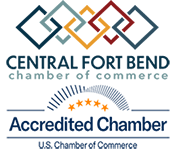
March 2025 Expert Article - Emergent Partners, LLC
In an era where technology is deeply embedded in business operations, leaders are grappling with its opportunities and challenges. In recent Business Roundtables, we discussed with industry professionals the role of technology in businesses today, including its complexities, potential pitfalls, and transformative power. Here are the key takeaways.
1. The Intent Behind Technology Implementation
One recurring theme was the importance of understanding the intent behind adopting new technologies. Businesses often implement tools under the assumption that they will automatically enhance efficiency or improve competitive advantage. However, the best approach is to critically assess whether the technology aligns with business goals and simplifies processes rather than complicating them.
Key takeaway: Before adopting any technology, consider its purpose. Is it a tool to genuinely improve processes, or is it an unnecessary addition that might introduce complexity?
2. Technology's Role in Productivity and Efficiency
Technology has revolutionized productivity by providing tools for tracking, measuring, and optimizing workflows. Many businesses strive for real-time data analysis and performance improvement. While this is a good approach and does create a competitive advantage, especially for smaller businesses, it is important to avoid "over-tracking." This leads to available resources spending too much time on analysis that creates more inefficiency than efficiency.
Key takeaway: Use technology to enhance productivity. Avoid overcomplicating workflows with unnecessary tracking systems or tools that add layers of complexity without meaningful benefits.
3. CRM Systems: A Double-Edged Sword
Customer Relationship Management (CRM) software can be both beneficial and detrimental depending on how it is used. While CRMs can streamline client and prospect management, they can become too complex, leading to low adoption rates among employees. This complexity can result in wasted resources and reduced efficiency.
Key takeaway: Start with the basics when implementing a CRM. Focus on essential features that align with your team’s needs, and gradually introduce additional capabilities as employees adapt.
4. Balancing Low-Tech and High-Tech Solutions
Despite the prevalence of advanced tools and quickly evolving technology, there is an enduring value associated with low-tech solutions, such as face-to-face interactions, handwritten notes, and whiteboard planning. These approaches can foster creativity, improve communication, and increase collaboration.
Key takeaway: Low-tech methods remain relevant in certain business contexts. They can complement high-tech solutions by offering simplicity and fostering personal connections.
5. Communication: The Most Complex Technology Challenge
Communication is one of the most challenging areas where technology plays a role. With multiple platforms like email, Zoom, messaging apps, and voice calls, determining the best method of communication can be overwhelming. Generational preferences further complicate matters, as older professionals may prefer phone calls, while younger employees lean toward texting or messaging apps.
Key takeaway: Establish clear communication policies and adapt to clients’ and team members’ preferred methods of communication to ensure consistency and effectiveness.
6. The Rise of Artificial Intelligence
Artificial Intelligence (AI) is transforming various aspects of business, particularly in content creation, marketing, and automation. While AI can boost efficiency, participants expressed concerns about its overuse, which can lead to a loss of authenticity and differentiation.
Key takeaway: AI is a tool to complement human creativity and expertise, and improve processes where automation is beneficial. Avoid incorporating AI just to jump on the bandwagon. Using AI effectively means using in a way that is uniquely beneficial to you and your business.
7. Technology’s Impact on Competitive Advantage
Establishing and maintaining competitive advantages is critical. This can shift with rapidly evolving technology. While more technology can create or maintain a competitive advantage, less technology can as well. In a world of complexity, simplicity can be a big advantage.
Key takeaway: Evaluate how your use of technology affects your competitive positioning. Sometimes, less is more, especially when it comes to building trust and delivering personalized services.
Master Technology Adoption with Emergent Partners
Intent plays a critical role when integrating technology into business operations. This intent has to be aligned with the business and what it is trying to achieve. Whether choosing a CRM, leveraging AI, or deciding between low-tech and high-tech solutions, the ultimate goal should be to create meaningful improvements without compromising simplicity or authenticity. Technology is a tool, not a one-size-fits-all solution. Businesses must be both strategic and tactical in their approach, ensuring that technology serves their needs and aligns with their values.
